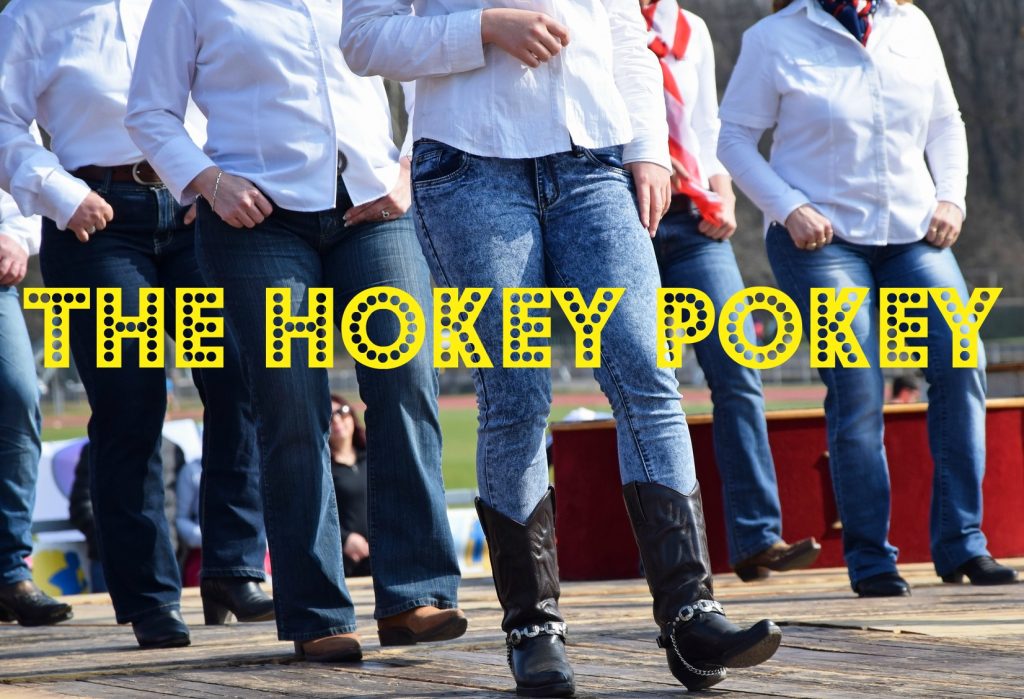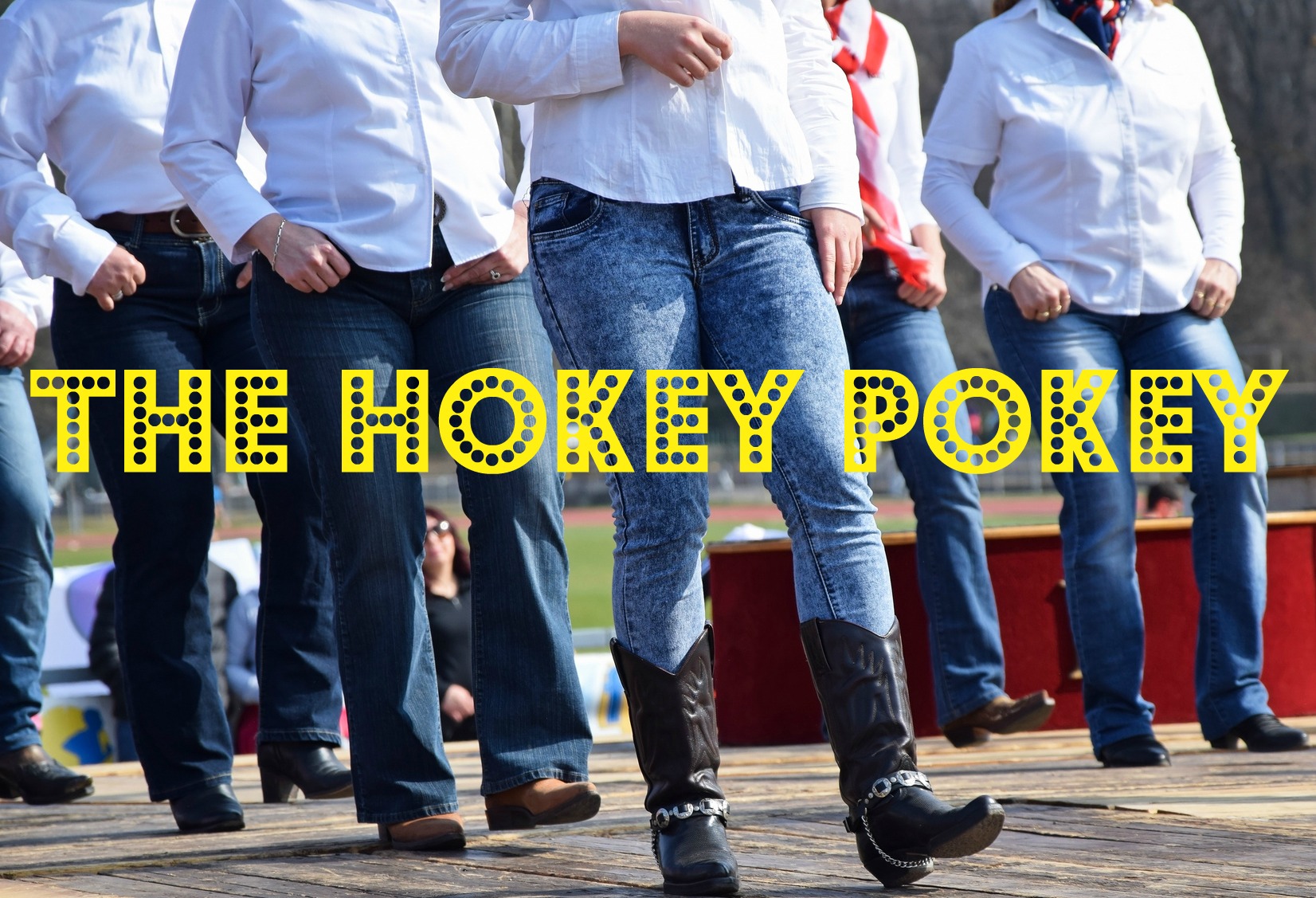Who invented the Hokey Pokey? It depends on who you ask, or where and when you lived.
DO “THE HOKEY COKEY”
In 1942 Irish songwriter and publisher Jimmy Kennedy, best known for “The Teddy Bear’s Picnic,” created a dance, and an instructional song to go along with it, called “The Hokey Cokey.” Written to entertain Canadian troops stationed in London, the lyrics told dancers to “put your left leg in / your left leg out / in out / in out / shake it all about / Do the Hokey-Cokey and you turn around / That’s what it’s all about.” Sound familiar? It should, but that’s actually not the song familiar to us today.
DO “THE HOKEY POKEY”
Composer Al Tabor was also entertaining Canadian troops in wartime London, and in 1942 he wrote a participation dance song called “The Hokey Pokey”—he said the name came from the London ice cream vendors of his youth, called “hokey pokey men.” The accompanying dance was very similar to Kennedy’s. Tabor accused Kennedy of reneging on an agreement to publish his song and writing his own “Hokey Cokey” instead. An out-ofcourt settlement was reached, and Kennedy won all rights to “The Hokey Pokey” (or Cokey). But it still isn’t the song we know today.
DO “THE HOKEY-POKEY DANCE”
In 1946, totally unaware of the British “Hokey Pokey” and “Hokey Cokey,” two Scranton, Pennsylvania, musicians, Robert Degen and Joe Brier, recorded “The Hokey-Pokey Dance” to entertain summer vacationers at Poconos Mountains resorts. Theirs went like this: “Put your right hand in / Put your right hand out / Put your right hand in / and you wiggle all about / Everything is okey dokey / when you do the Hokey Pokey / That is what the dance is all about.” The song was a regional favorite at dances and resorts for the rest of the 1940s. But even that isn’t the song we know today.
DO THE OTHER “HOKEY POKEY”
In 1949 bandleader Larry LaPrise, also without any knowledge of the other “Hokey Pokeys,” came up with a dance and an instructional song called “The Hokey Pokey.” He also wrote his to entertain wealthy vacationers, but this time in the remote ski resort town of Sun Valley, Idaho. Sample lyrics: “You put your left foot in / you put your left foot out / you put your left foot in / and you shake it all about / you do the Hokey Pokey and you turn yourself around / that’s what it’s all about.” The song was a hit at the resorts, so LaPrise recorded it. It flopped, but Degan and Brier found out about it and sued LaPrise for ripping off their “The Hokey-Pokey Dance.” Despite the fact that his version came out after theirs, LaPrise won the rights to anything to do with “The Hokey Pokey.” In 1953 Ray Anthony’s Orchestra recorded it—a double-A-side single with “The Bunny Hop”—and it went to #13 on the pop chart. And that’s the version we know today.
SO THAT’S WHAT IT’S ALL ABOUT?
So that settles who wrote the popular incarnation of “The Hokey Pokey.” But traces of the Hokey Pokey—an easy dance with a song telling you how to do it—appear in folk dances going back hundreds of years in North American and Europe. Pop culture historians believe that the reason so many different writers came up with what was essentially the same song was because it’s part of our shared cultural heritage, including:
- The Hinkum-Booby. In 1857 the religious sect known as the Shakers had their own novelty song and dance popular in their New Hampshire community. The lyrics go something like this: “Iput my right hand in, I put my right hand out; in, out, shake it all about.” The ditty and corresponding gestures were then repeated, and went on to include the left hand, left and right feet, and the head…just like the modern-day Hokey Pokey.
- Hincumbooby. Of course, the Shakers’ “Hinkum-Booby” is reminiscent of the Puritans’ earlier “Hincumbooby” song and dance, which goes a little something like this: “Hincumbooby, round about, right hands in and left hands out.” That dance dates to Massachusetts in the mid-1600s.
- The Hincum Looby. This one dates back even farther—to Tudor England in the 1500s. And that’s what it’s all about.










